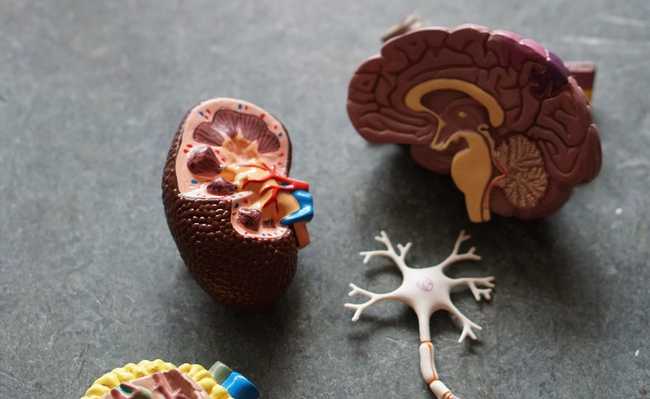The amazing health benefits of pepper
Capsaicin is the bioactive compound present in several pepper species responsible for its spicy taste and health benefits.

Edited and resized image by Fabienne Hübener, is available on Unsplash
Pepper is a generic name that refers to various spicy fruits belonging to the botanical families. Solanaceae, Myrtaceae and Piperaceae. The various species of edible pepper are used mainly as a seasoning, which can be cooked, dehydrated and ground into a powder. Powdered red pepper is known as spicy paprika.
- What is paprika, what is it for and its benefits
Sweet paprika, on the other hand, is made from paprika, which, although not spicy, is a fruit that belongs to the same family as cayenne pepper, chili pepper, tabasco pepper and chili pepper. they belong to the family Solanaceae and to the botanical genus Capsicum . These peppers have no botanical relationship with black pepper (also called black pepper, whose scientific name is piper nigrum.
Capsaicin is the main bioactive compound in peppers Capsicum, being responsible for its unique flavor, spiciness and health benefits. Check out:
Benefits of red pepper
One tablespoon (15 grams) of raw, fresh red pepper can provide:- Calories: 6
- Protein: 0.3 grams
- Carbohydrates: 1.3 grams
- Sugar: 0.8 grams
- Fiber: 0.2 grams
- Fats: 0.1 grams
Vitamins and minerals
Pepper is rich in various vitamins and minerals. However, as it is only consumed in small amounts, its contribution to the recommended daily intake is irrelevant. But just out of curiosity, know that pepper, despite not being a significant source of vitamins and minerals, it contains:- Vitamin C: Pepper is very rich in this powerful antioxidant, important for wound healing and immune function;
- Vitamin B6: Plays an important role in energy metabolism;
- Vitamin K1: Also known as phylloquinone, vitamin K1 is essential for blood clotting and healthy bones and kidneys;
- Potassium: An essential mineral that serves a variety of functions, potassium can reduce the risk of heart disease when consumed in adequate amounts;
- Copper: Often absent from the Western diet, copper is an essential trace element, important for strong bones and healthy neurons;
- Vitamin A: Red pepper is rich in beta-carotene, which the body converts to vitamin A.
- Capsantin: The main carotenoid in pepper, being responsible for the red color and antioxidant properties that can fight cancer;
- Capsaicin: One of the most studied vegetable compounds in pepper, capsaicin is responsible for the spicy (hot) taste and for many of its health effects;
- Synapic Acid: Also known as sinapinic acid, this antioxidant has a variety of potential health benefits;
- Ferulic Acid: Like sinapic acid, ferulic acid is an antioxidant that can help protect against a variety of chronic diseases.
- Antioxidants: what are they and in what foods to find them
But, according to one study, the antioxidant content of ripe (red) pepper is much higher than that of green (unripe) pepper.
pain relief
Capsaicin, the main bioactive compound in pepper, has some unique properties. It binds to pain receptors, inducing a burning sensation without causing any real injury.
Even so, high consumption of pepper (or capsaicin) can desensitize pain receptors over time, reducing the ability to sense the fiery flavor of pepper. Capsaicin also makes these receptors insensitive to other forms of pain, such as heartburn caused by gastric reflux.
One study found that people with heartburn who consumed 2.5 grams of red pepper daily experienced worsening at the start of the five-week treatment but improved over time. Another six-week study showed that eating three grams of pepper a day improved heartburn in people with gastric reflux.
However, the desensitization effect does not appear to be permanent. One study found that this effect was reversed 1-3 days after stopping capsaicin consumption.
Weight loss
Obesity is a serious health condition that increases the risk of many chronic diseases such as heart disease and diabetes. Some evidence suggests that capsaicin can promote weight loss, reducing appetite and increasing fat burning (see studies about it here: 9, 10).
- Diabetes: what it is, types and symptoms
Some studies show that ten grams of red pepper can significantly increase fat burning in men and women (check out the studies here: 11, 12, 13, 14, 15, 16).
Capsaicin can also reduce calorie intake. A study of 24 people who regularly consumed pepper found that ingesting capsaicin before a meal led to lower caloric intake.
In addition, regular consumption of red pepper supplements or capsaicin can help with weight loss when combined with other healthy lifestyle strategies (see study on this: 17).
However, pepper is probably not very effective alone. In addition, tolerance to the effects of capsaicin can develop over time, limiting its effectiveness (see study here: 18)
Increase longevity
According to a Chinese survey, constant consumption of spicy food, such as peppers, is associated with up to 14% reduced risk of death.
Researchers examined the diets of nearly 500,000 people in China for more than seven years and found that individuals who ate spicy foods one or two days a week had a 10% lower risk of death. In addition, those who consumed such foods more than three days a week had a 14% lower risk. According to the analyses, Chinese who ate fresh rather than dried pepper tended to have a lower risk of dying from cancer, ischemic heart disease and diabetes.
unwanted effects
Pepper can have adverse effects on some people, and many people don't like the burning sensation.
burning sensation
Pepper is well known for its hot and spicy taste. The substance responsible for this is capsaicin, which binds to pain receptors and causes an intense burning sensation.
For this reason, the compound oleoresin capsicum extracted from pepper is the main ingredient of sprays of pepper (see study about it here: 19)
In high amounts, it causes severe pain, inflammation, swelling and redness (see study about it here: 20). Over time, regular exposure to capsaicin can cause certain pain neurons to become insensitive to other pain.










